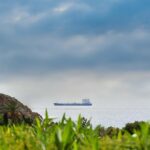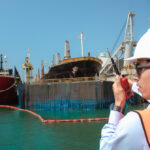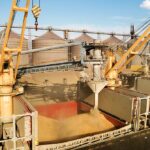In addition to ongoing regulatory efforts to reduce CO2 emissions from ships, further initiatives are being implemented to improve air quality by expanding the number of designated sulphur emission control areas (SECAs). We wish to update members on the most important of these as follows:
- MARPOL Designated Emission Control Areas (ECAs): Under Regulation 14 of MARPOL Annex VI, a 0.10% sulphur limit applies within the North American, US Caribbean, North Sea, and Baltic ECAs. As of 1 May 2025, this limit will also extend to the Mediterranean Sea, and from 1 March 2026, to the Canadian Arctic and Norwegian Sea ECAs.
- EU: Under the EU Sulphur Directive, ships at berth or anchor in EU ports must comply with the 0.10% sulphur limit.
- Turkey: Ships at berth in Turkish ports or operating on Turkish inland waterways must comply with the 0.10% limit. However, this requirement does not apply to ships transiting the Bosporus and Dardanelles Straits, or the Sea of Marmara, unless their transit is delayed, such as staying at anchorage or port for more than two hours while awaiting passage.
- Israel: As of 23 February 2023, a 0.10% sulphur limit applies in all Israeli ports.
- Norway: The entire Norwegian world heritage fjord area falls under the North Sea ECA’s 0.10% sulphur limit. Ships of 10,000 gross tons or more must also carry an adapted environmental instruction. Furthermore, Norwegian authorities are in the process of drafting zero-emission regulations for cruise ships, tourist boats, and ferries in the UNESCO-listed West Norwegian Fjords, which will take effect in 2026.
- Iceland: A 0.10% sulphur content limit applies in Iceland’s territorial sea and internal waters, including fjords and bays.
- China: China has implemented a 0.50% sulphur limit in its designated “Coastal ECA,” which covers all sea areas and ports within its territorial waters. A stricter 0.10% limit applies in the specially designated “Hainan Coastal ECA.”
- South Korea: South Korea has designated domestic ECAs where a 0.10% sulphur limit applies.
- USA: While Californian waters fall within the North American ECA designated under MARPOL Annex VI, the state of California enforces its own 0.10% sulphur limit.
- Panama Canal: Panama is not part of MARPOL’s designated ECAs, so the global 0.50% sulphur cap applies. However, vessels transiting the Panama Canal are required to switch their main propulsion engines, boilers, auxiliary generators, and other ancillary equipment from residual fuels to marine distillate fuels upon entering Panama Canal (ACP) waters.
While current regulatory attention is largely focused on reducing CO2 emissions, it is important to remain aware of the evolving sulphur regulations worldwide. These regulations cover both non-compliant fuels and increasingly stringent country-specific rules.
For further information we refer to the IMO Emission Control Areas as listed on their website.
https://www.imo.org/en/OurWork/Environment/Pages/Emission-Control-Areas-(ECAs)-designated-under-regulation-13-of-MARPOL-Annex-VI-(NOx-emission-control).aspx
Members with questions regarding specific locations are encouraged to contact NNPC at claims@nnpc.nl for assistance and advice.




